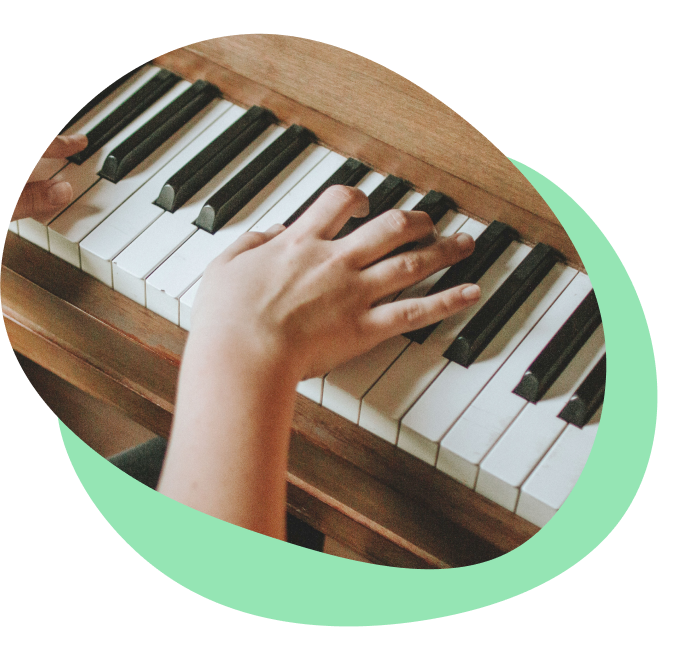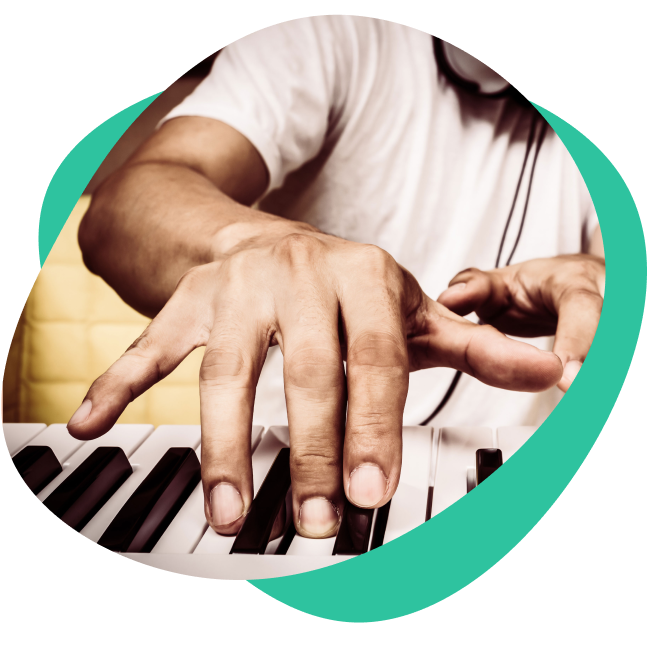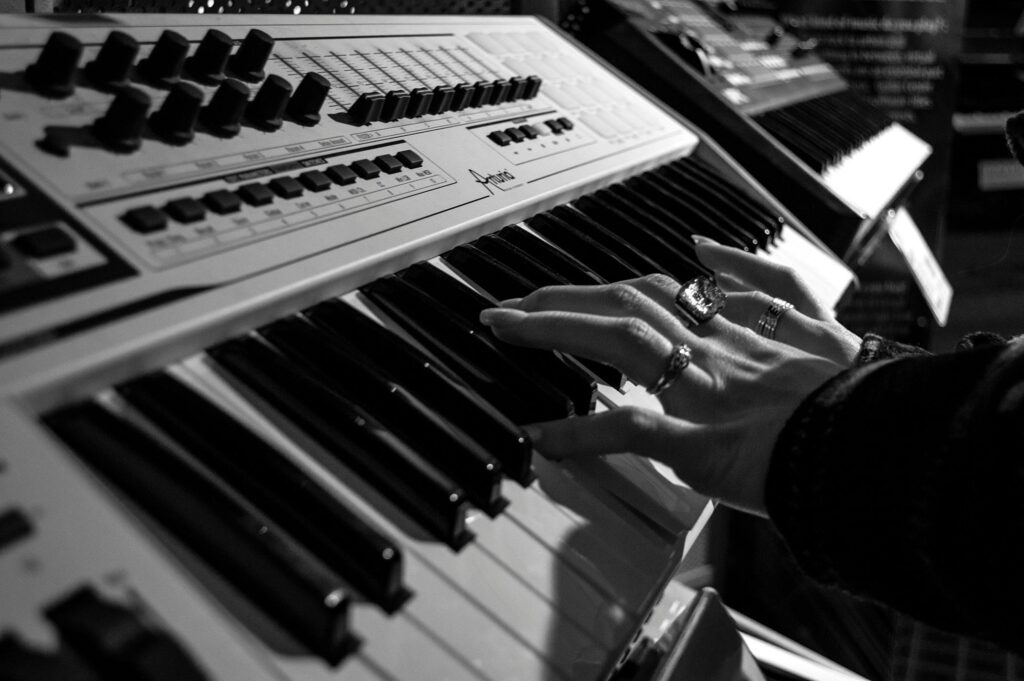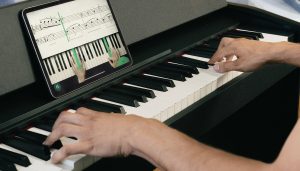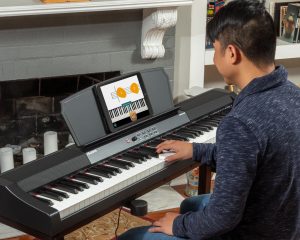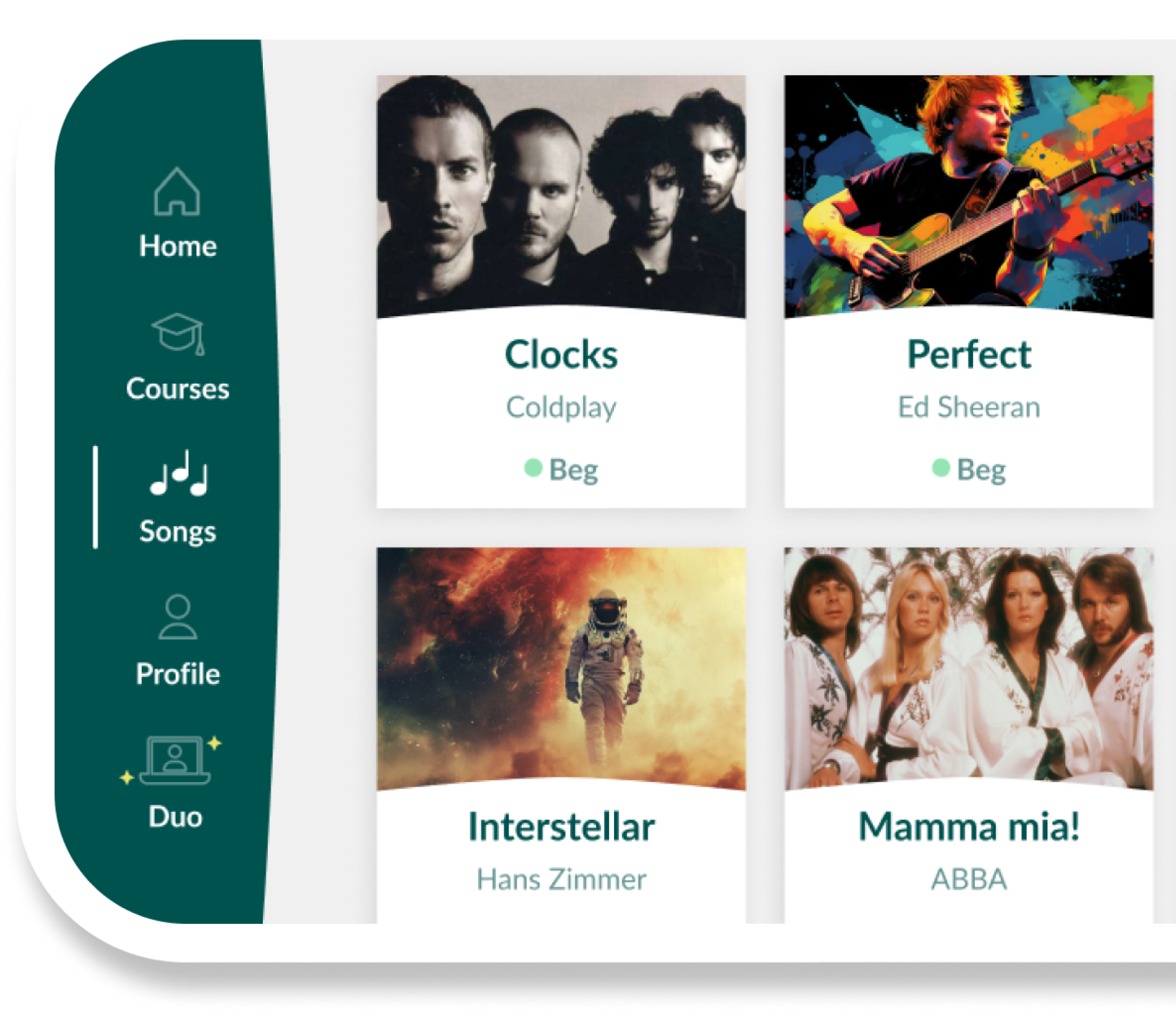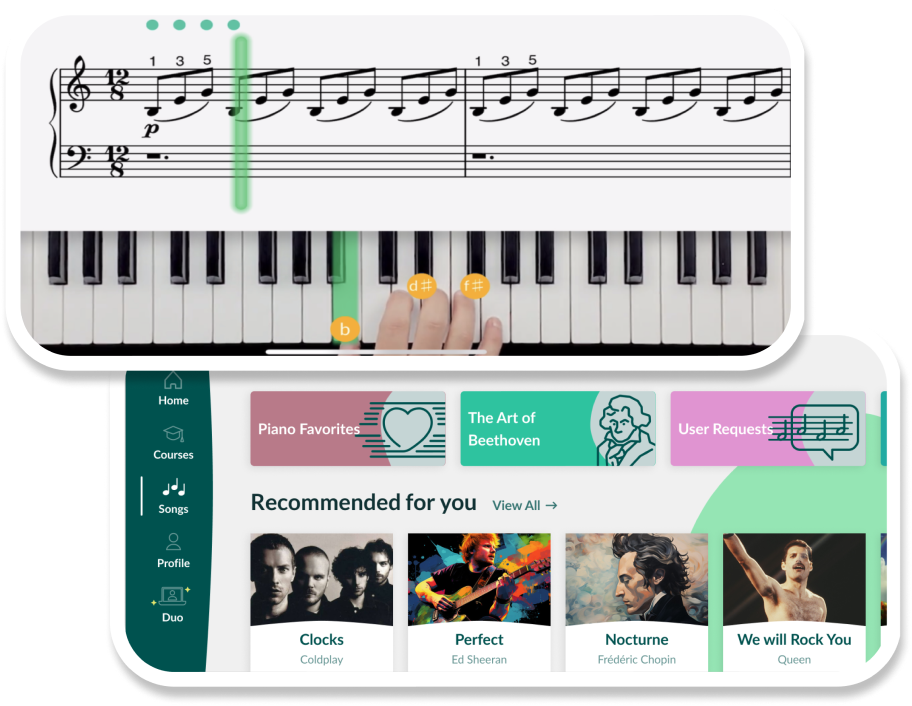When starting your piano journey, choosing the right keyboard is crucial. One of the biggest decisions beginners face is selecting between semi-weighted vs weighted keys. While both offer a different playing experience, understanding their differences will help you find the best fit for your learning needs. In this guide, we’ll break down semi-weighted keys and weighted keys, discuss their impact on piano technique and help you decide which one suits your needs best.
- Fall in love with the music - Learn your favorite songs, at a level suitable for you.
- Enjoy interactive piano lessons - Explore courses covering music theory, technique chords & more.
- Get real-time feedback - Skoove's feedback tells you what went well and what needs practice.
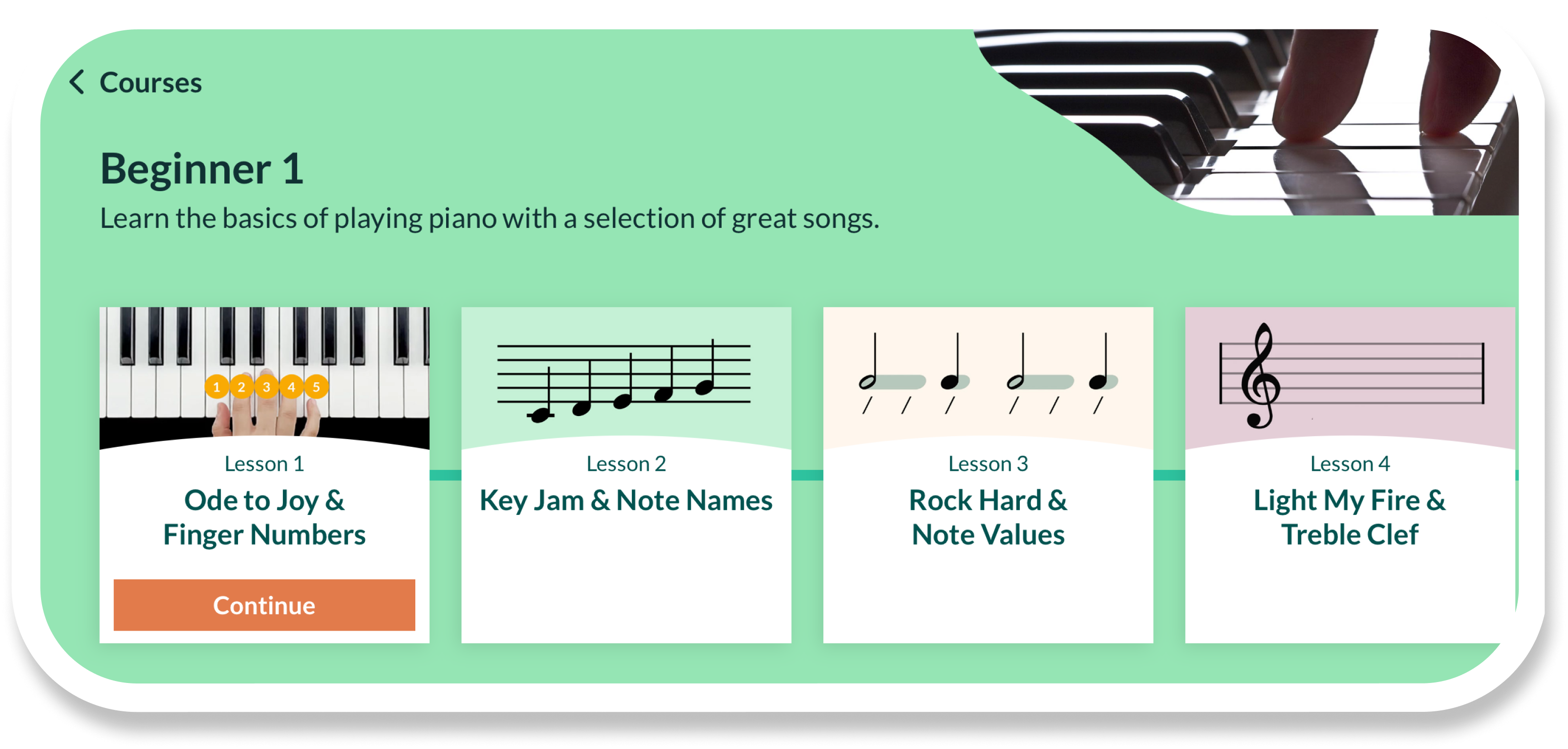
What is a weighted keyboard?
What are weighted keys on a keyboard? A weighted keyboard aims to replicate the feel of an acoustic piano by adding resistance to the keys. This resistance mimics the hammer mechanism found in traditional pianos. A keyboard with weighted keys is particularly beneficial for those who plan to transition to an acoustic piano in the future.
Types of weighted keys
Types of weighted keys are a natural feature in digital pianos, designed to replicate the feel of an acoustic piano by providing varying levels of resistance and responsiveness.
- Fully Weighted Graded Hammer Action – Each key has an individual weight, with heavier keys on the lower register and lighter keys on the higher end. This is the most realistic option for mimicking acoustic weighted piano keys.
- Fully Weighted (Non-Graded) Hammer Action – While the keys are weighted, they are uniform in resistance across the keyboard, which differs from the feel of an acoustic piano.
- Semi-Weighted Keys – These keys use a combination of springs and light weights to offer some resistance but do not fully replicate the depth of weighted piano keyboard action.
Pros and cons of semi-weighted and fully weighted keys
Understanding the pros and cons of semi-weighted and fully weighted keys can help musicians choose the right keyboard based on their playing style, skill level, and needs. While both types offer unique benefits, the choice ultimately depends on personal preference and musical goals. Below is a breakdown of their advantages and limitations.
Pros of semi-weighted keys
- More affordable, making them great for beginners on a budget.
- Lighter and more portable, perfect for musicians who travel.
- Most semi weighted keyboards come with attached or offer an option for plug in piano pedals.
- Easier to play for extended periods, reducing finger fatigue.
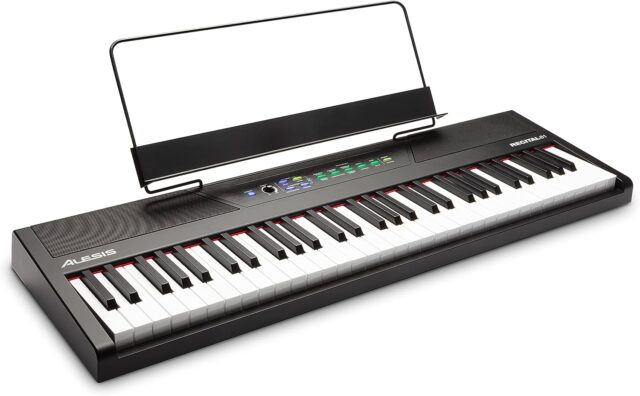
Cons of semi-weighted keys
- Does not fully prepare players for an acoustic piano.
- Lacks the depth and touch sensitivity found in weighted vs semi-weighted keys.
- Not ideal for classical or jazz music that requires dynamic control.
Pros of fully weighted keys
- Best for classical and professional playing due to realistic response.
- Prepares students for transitioning to an acoustic piano.
- Improves finger strength and technique, which is crucial for advanced playing.
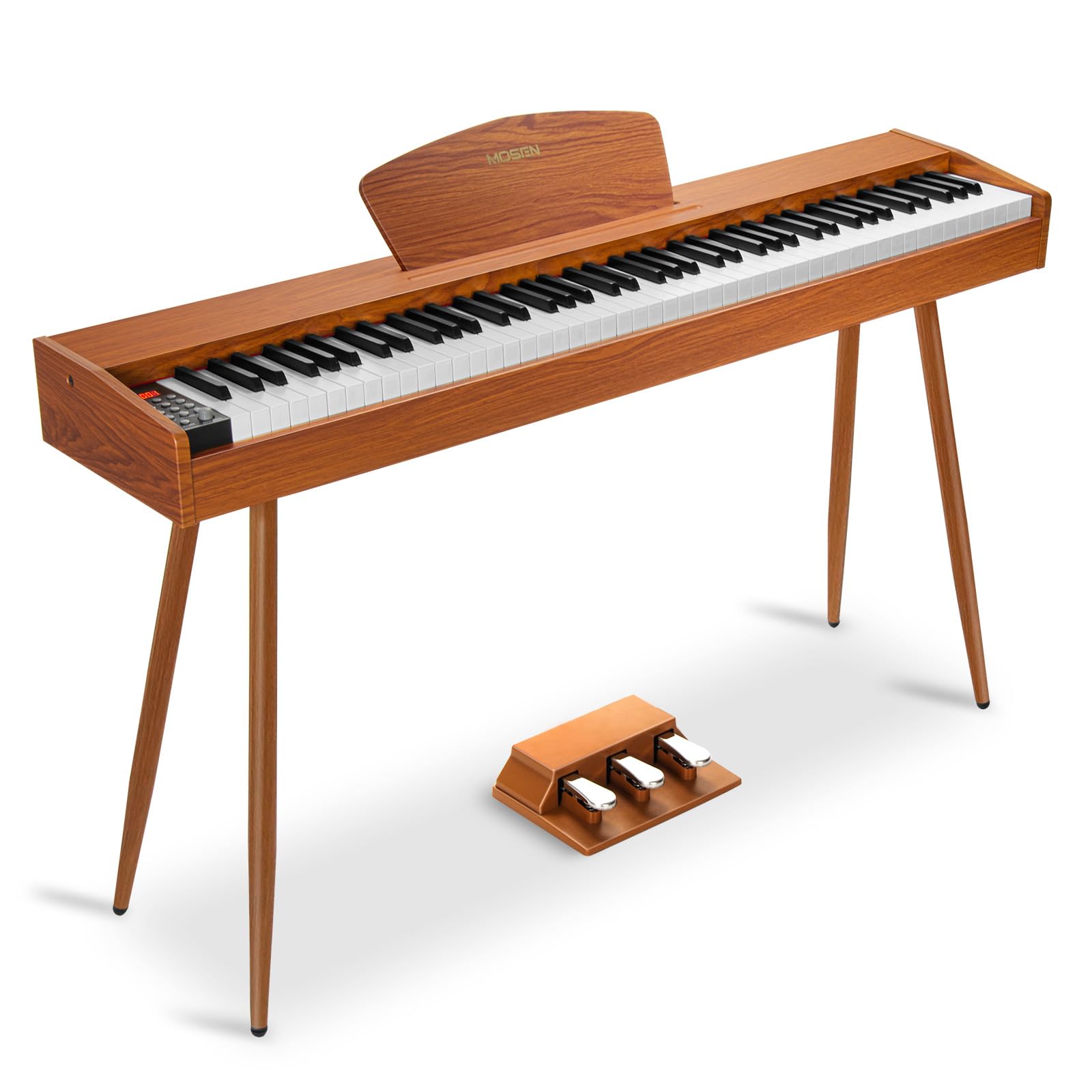
Cons of fully weighted keys
- More expensive than semi-weighted keyboards.
- Heavier and less portable, making it harder to transport.
- May feel too stiff for complete beginners.
Which one is best for beginners?
If your goal is to learn piano properly and transition to an acoustic piano, a weighted key keyboard is highly recommended. However, if you are looking for an affordable, lightweight option for casual playing, semi-weighted keys might be a better choice.
| Feature | Semi-Weighted Keys | Fully Weighted Keys |
| Resistance | Moderate (Spring-assisted) | High (Hammer mechanism) |
| Feel | Lighter, quicker response | Closer to an acoustic piano |
| Transition to Acoustic Piano | More challenging | Easier |
| Price | More affordable | Generally more expensive |
| Portability | Lighter | Heavier |
Consider these factors before deciding:
- Budget – Fully weighted keyboards are more expensive, while semi-weighted ones are cost-effective.
- Learning Goals – If you aim to play classical music or take formal lessons, opt for a weighted piano keyboard.
- Portability Needs – If you plan to carry your keyboard frequently, semi-weighted keys are lighter and more travel-friendly.
Using digital and weighted pianos with skoove
No matter which type of keyboard you choose, Skoove offers an interactive way to learn and master the piano. The app provides structured lessons tailored to both semi-weighted keys and weighted piano keys, helping beginners develop proper technique as well as understanding of key signatures and many other theory topics. If you have a weighted keyboard vs unweighted, Skoove’s touch sensitivity training can help you understand key dynamics and improve expression.
For those using a weighted piano keyboard, Skoove’s adaptive learning system adjusts to your playing style, guiding you toward a smoother transition to an acoustic piano. If you’re practicing on a digital keyboard, the app’s real-time feedback ensures you develop good habits early. To enhance your learning, Skoove also provides guides on essential topics like how to label piano keys, choosing the best digital keyboards and the role of piano pedals in improving your technique. You can also check out our helpful courses and lessons which are ideal for beginners!
Conclusion
Choosing between semi-weighted vs weighted keys depends on your learning goals and budget. If you want an experience close to an acoustic piano, weighted keys are the best option. If you prioritize affordability and portability, semi-weighted keys offer a good starting point. Whatever you decide, consistency in practice and the right learning tools, like Skoove, will set you up for success in your piano journey.
Author of this blog post:
Susana Pérez Posada

With over seven years of piano education and a deep passion for music therapy, Susana brings a unique blend of expertise to Skoove. A graduate in Music Therapy from SRH Hochschule Heidelberg and an experienced classical pianist from Universidad EAFIT, she infuses her teaching with a holistic approach that transcends traditional piano lessons. Susana’s writings for Skoove combine her rich musical knowledge with engaging storytelling, enriching the learning experience for pianists of all levels. Away from the piano, she loves exploring new places and immersing herself in a good book, believing these diverse experiences enhance her creative teaching style.
Published by Lydia Ogn from the Skoove team




